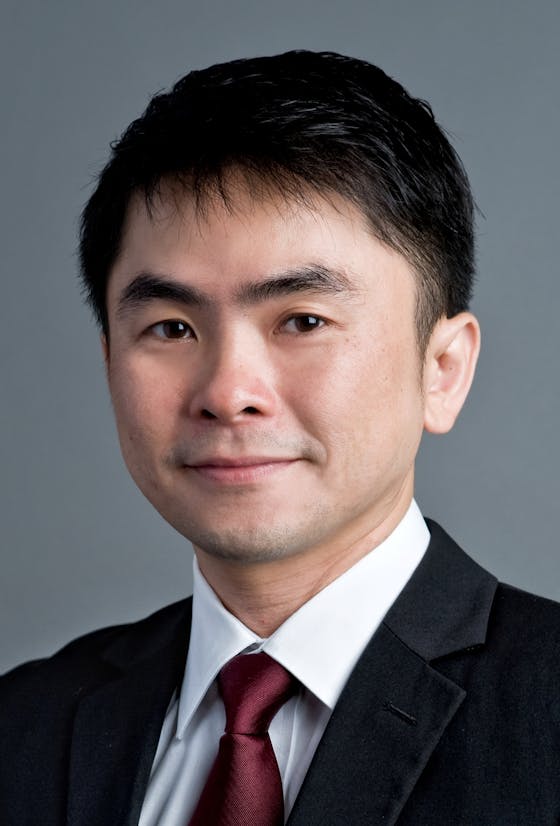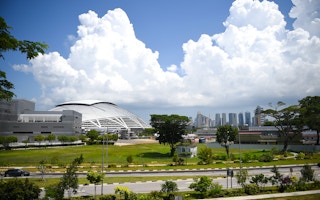These are statistics that Schneider Electric knows well: Buildings consume 40 per cent of the world’s energy today – and that consumption will soon climb. Total energy consumption in buildings will increase from 81 quadrillion British thermal unit (BTU) in 2010 to 131 quadrillion Btu in 2040, an average annual growth rate of 1.6 percent per year, according to the United States Energy Information Administration.
Buildings also currently account for about a third of global greenhouse gas emissions.
As cities expand to accommodate a growing urban population, designers, building owners and managers therefore have an increasing responsibility to make offices and homes much more energy efficient.
This group of people, says Benedict Soh, vice-president for Schneider Electric’s partner and industry business, wield an enormous amount of power to raise sustainability standards in buildings around the world, and the company’s mission is to provide the tools to enable them to do so.
Schneider Electric, based in Rueil-Malmaison, France, is one of the biggest suppliers of energy management, automation and distribution systems, with operations in more than 100 countries around the world.
To highlight their products and systems, it will be exhibiting at this year’s Build Eco Xpo (BEX) Asia, the premier green building trade show for the region organised by Reed Exhibitions next month.
Held in conjunction with the International Green Building Conference 2015 and Singapore Green Building Week organised by Singapore’s Building and Construction Authority, BEX Asia 2015 will bring together global green building experts, policy-makers, academics and other practitioners to discuss green building solutions.

Benedict Soh, vice-president for Schneider Electric’s partner and industry business
Ahead of the event, Eco-Business speaks with Soh on the green building movement in Asia and the role that Schneider is playing in raising sustainability standards in the industry.
How would you describe the green building movement in Singapore and Asia? What sort of progress has the movement made, in your view?
The green building movement is gaining traction throughout Asia, especially in Singapore, as businesses increasingly see attractive economic returns and social-environmental benefits from enhancing the overall sustainability of their operations.
Many governments in Asia have in principle embraced the concept and there is strong support via policies and regulations. On the other hand, we see that green building adoption is not moving as fast as the rhetoric would suggest. Some challenges to wider adoption include the size and performance design of green building technologies, especially in relation to building code compliance and life-cycle analysis.
However, with the growing importance of sustainability and citizens’ quality of lives, we are confident that the green building movement will continue to grow and strengthen in Asia.
Singapore is seen as a green beacon in Asia as countries look to Singapore as a role model when they embark on their own development projects. The Singapore government has been taking a leadership role in encouraging the growth of green buildings. General incentive schemes, a comprehensive building rating tool as well as a robust certification and accreditation ecosystem has led to the number of green buildings to grow from just 17 in 2005 to 2,100 in 2014.
What are some of the technologies that you will be showcasing at BEX this year?
Buildings consume 40 per cent of the world’s energy today and that number will soon climb. Many cities are thus struggling to make their buildings smarter to improve occupant safety, comfort, and productivity, as well as be more energy-efficient in the process.
This challenge is even more daunting for Southeast Asia, where more than 90 million people are expected to move to cities by 2030, bringing the urban population from 30 per cent currently to almost 45 per cent.
“
The green building movement is gaining traction throughout Asia, especially in Singapore, as businesses increasingly see attractive economic returns and social-environmental benefits from enhancing the overall sustainability of their operations.
Benedict Soh, vice-president for Schneider Electric’s partner and industry business
Schneider Electric wants to enable cities in the region to be more efficient, liveable, and sustainable. This year, we are showcasing some of our innovations which will help buildings achieve up to 30 per cent savings in their energy consumption.
One example is our Smart Building Management System, called the StruxureWare Building Operation Software, which monitors, measures, and optimises the building’s performance throughout its life cycle.
Another is our smart living solution, the user-friendly ULTi Ezinstall 3, which is a retrofit-ready mini home-control system that operates on ZigBee wireless technology, and is hence easily accessible on both iOS and Android platforms.
We also have a smart connectivity solution which we call Actassi. It is a structured cabling solution that provides a reliable and high-performance network connectivity solution for any building backbone.
Would you be able to share with us a couple of case studies of how your solutions have helped customers achieve their green building aims?
Singapore’s premier performing arts theatre, Esplanade – Theatres on the Bay, built in 2002, is one example Schneider Electric’s partnership with Esplanade allowed the venue to better manage electricity demand throughout the building without compromising on busy operations.
We used a ‘plug and play’ retrofit solution – ECOFIT™ – resulting in minimal changes in the existing switchboard and a maximum time of one hour each for each any replacement of any parts a method which conventional replacement work is not able to achieve.
This reduces downtime as compared to a full panel replacement, which is crucial for a busy performing arts venue like the Esplanade. Separately, we use integrated energy metering features to improve sustainability by constantly monitoring energy usage.
The Singapore Sports Hub is another example. Located in the centre of Singapore on a prime 35-hectare seafront site, the hub is a fully integrated sports, entertainment and lifestyle centre. Its electrical power distribution system plays a central role in the effective functioning of the facility, while its quality and reliability is expected to ensure uninterrupted power supply for events.
Working with construction partner Dragages Singapore, Schneider Electric designed, manufactured and installed a system consisting of equipment ranging from high tension cables to transformers and bus ducts that helped power the infrastructure of the Singapore Sports Hub in a cost-effective manner.
What sort of impact are you hoping to make at the show, and why have you chosen to exhibit at BEX?
Singapore lies in the heart of Asia and our participation at the show will show how Schneider Electric is firmly established in Asia to help our customers in the region address megatrends such as urbanisation, industrialisation and digitisation
We can help organisations do more while doing less, as well as deliver reliable, safe, and sustainable solutions that integrate seamlessly to our environment.
Through our participation in this show, we want to promote greater adoption of energy efficiency in buildings across the region and demonstrate how our actions today can indeed lead to a better tomorrow for our communities everywhere.
BEX Asia is an ideal platform for global business sourcing, network and knowledge-sharing for the sustainable built environment in Southeast Asia. The strategic focus on energy efficiency is aligned with Schneider Electric’s goals and objectives of building greener communities and facilitating access to energy to everyone, and we’re happy to be part of this.
Schneider Electric – and hundreds of other exhibiting companies – will be at BEX Asia and MCE Asia 2015, to be held at Marina Bay Sands from 2-4 September. More than 11,000 visitors are expected and more than 550 exhibiting companies will be on site to showcase their latest innovations in green building technology. Click to register for these trade shows:
MCE Asia 2015: www.mcexpocomfort-asia.com
BEX Asia 2015: www.bex-asia.com


















